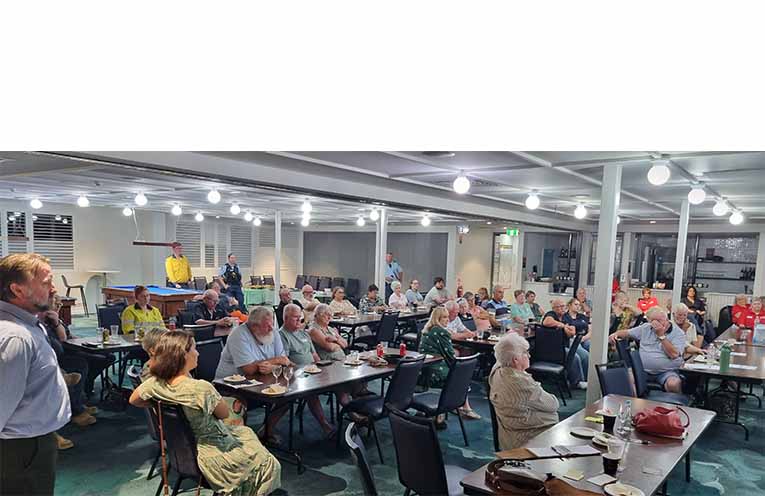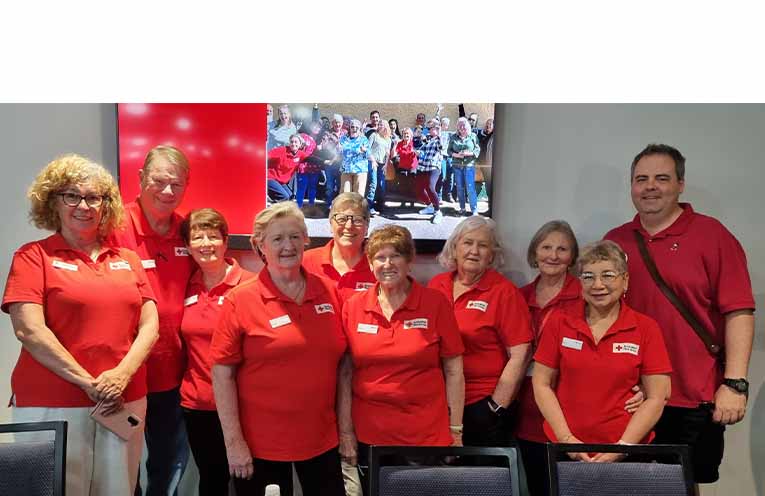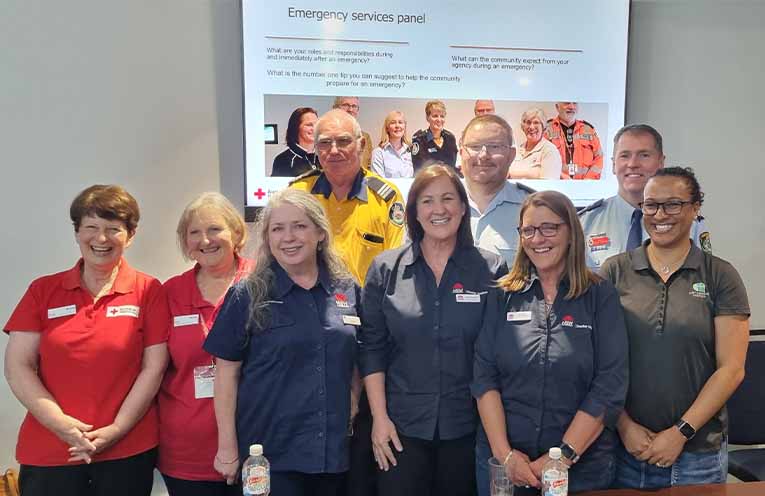RESIDENTS from all over Karuah contributed to a greater understanding of the emergency preparedness of their community at a first-of-its-kind RediCommunities Workshop held at Karuah RSL on Thursday 16 October.
“The aim of this workshop is to support and implement community ideas to strengthen resilience and prepare for disasters,” Red Cross Emergency Services Officer Karen Maloney said.
“We have had record rainfall this year, starting with the January storm that led to a big power outage, then Cyclone Alfred and the rains through winter.
“I picked Karuah for this first workshop because Karuah has an appetite for learning more and it is a perfect place to visit.”
A room filled with more than 70 people heard from a panel representing multiple state and local government organisations about the realities and needs of emergency and disaster planning and handling.
The panel was composed of representatives including Australian Red Cross Emergency Services, SES, RFS, Police, the NSW Reconstruction Authority, and Disaster Welfare organisations, as well as Port Stephens Council.
Each organisation outlined their role in an emergency and reinforced a joint message to the public about having and maintaining a plan, and staying well-informed.
“Download the ‘Hazards Near Me’ app to your smartphone, it is the primary warning method for all emergency agencies,” said Port Stephens-Hunter Police District Inspector David Donovan.
“The police play a significant role in disaster response as operations controllers. We let relevant agencies combat issues at hand and co-ordinate to get things done.”
“There is an established hierarchy for emergency situations, and significant planning goes in ahead of real incidents, but we must stress that there is no point in trying to decide what to do as the fire is actually heading down the road, you have got to have the plan beforehand.”
A sobering reality is that, given the oft-stretched resources of emergency services during disasters, there is no guarantee that someone is going to come save you, meaning your best bet is to know exactly what to do, and what are your trigger points to leave.
NSW SES’ John Thirkill said, “The impacts from power outages can last for days and the outlooks from the BOM can change often.”
Karuah RFS Captain Jim Semple added, “We have a four-stage fire warning system, and people need to know what each stage means for their fire plan, and that by ‘catastrophic’ they should really have their plan activated.”
Port Stephens Council (PSC) confirmed that local government has plans, and updates them in Census years (2026 is next).
PSC is also one of a few to have hired full-time emergency planning personnel.
After disaster strikes, it is the volunteers from Red Cross Emergency Services who administer psychological first aid by looking, listening and linking people to ensure they recover as quickly as possible from trauma.
The NSW Disaster Welfare organisation also provides welfare services to those affected, bringing in support groups and charities, and providing basic accommodation, sustenance and clothing to those in need.
“An evacuation centre should be seen as a lifeboat, not a cruise ship,” said Karen, emphasising that you “really do not want to end up in an evacuation centre.”
It is preferable to have a plan in place before disaster strikes, so that people can avoid the “lifeboat” and end up with family or friends and in relative comfort, until they are back on their feet.
After the disaster, the NSW Reconstruction Authority, which is not part of the emergency response, brings out other government departments to sort out documents and services needs, helping to fill out applications and find resources to clean-up.
Questions raised by the community were quite serious and mostly surrounded the lack of communications capabilities, including the inevitable breakdown of mobile and internet services, and the extreme hazards of social media misinformation, as well as age-group computer literacy.
These are all issues that the panel and Red Cross members agreed to take onboard for future workshops.
By Thomas O’KEEFE
You can help your local paper.
Make a small once-off, or (if you can) a regular donation.
We are an independent family owned business and our newspapers are free to collect and our news stories are free online.
Help support us into the future.





